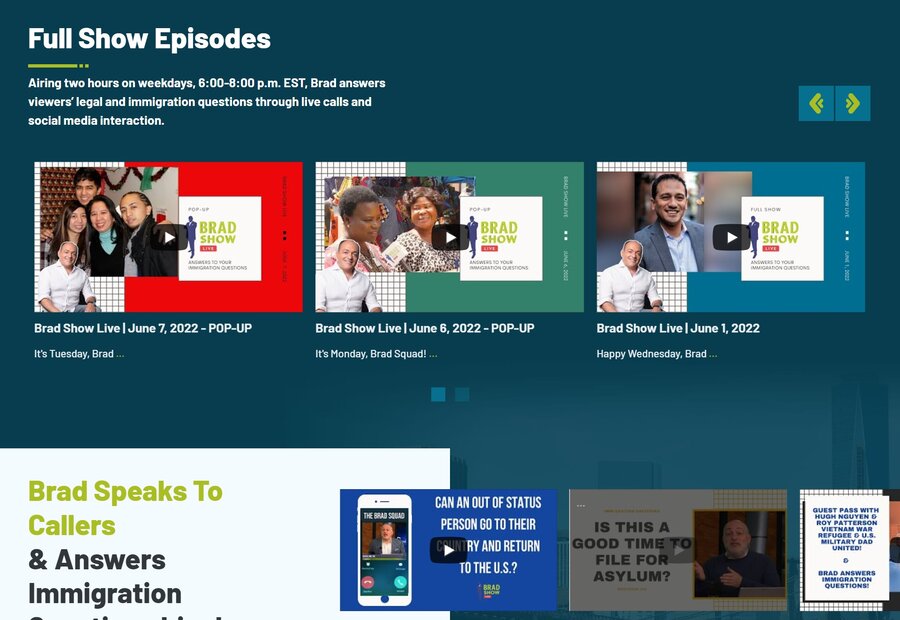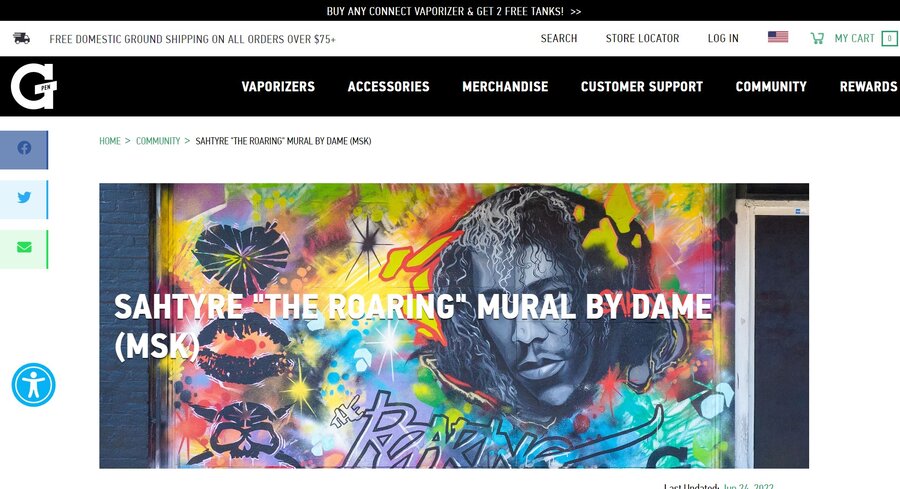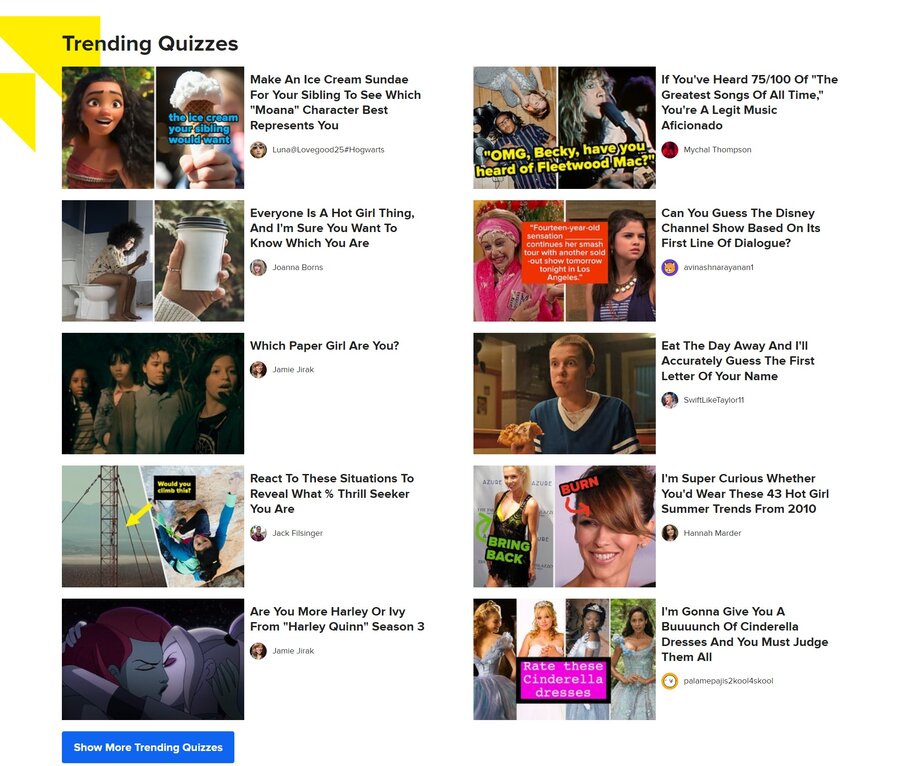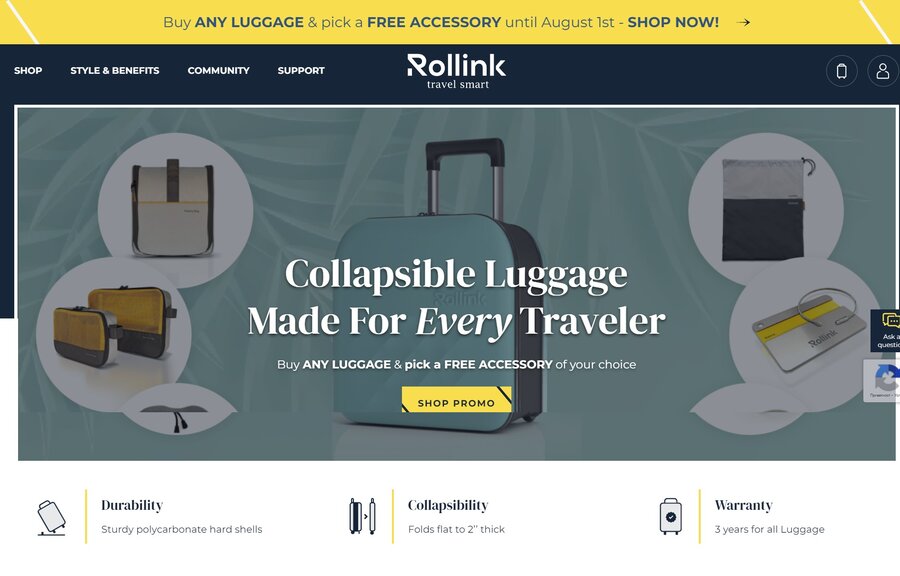It takes more than just pretty design and educational content to attract and keep visitors’ attention. In fact, 53% of visitors will abandon your website if it loads too slowly, and 88% won’t return to your website after a bad user experience.
We understand that some of the key pain points for brands include low engagement and high bounce rates, and we know exactly how to help you overcome these hurdles. Interactive website design can significantly boost key performance indicators.
We’ll guide you through the step-by-step process of how to make an interactive website, detail key elements for interaction and share top examples of websites across industries that offer an engaging user experience through interactive design.
[ez-toc]
Digital Silk builds custom websites. Request A Quote
What Is An Interactive Website?
An interactive website is a site that engages with users or reacts to a user’s input or action. For example, an interaction might be hovering over an image and seeing it move, commenting on a post, or clicking on internal links.
Interactive website design allows the user to be actively engaged when visiting a site, instead of simply viewing or scrolling through a page. It creates a more dynamic experience for the user, as opposed to a fully static website.
What Makes Website Elements Interactive?
Interactive website design has unlimited possibilities depending on the designer’s imagination and skills as well as on your target audience.
The elements designers most commonly use to make interactive websites include:
- Responsive, mobile-friendly design
- Fast loading speed
- Animation and motion graphics
- Engaging scrolls
- Videos
- Chat options
- Interactive navigation
- User-generated content
- Social media integrations
- Quizzes and games
Let’s explore how these elements help your website’s performance. You can also quick-jump to explore these interactive website elements in more detail.
Our experts can help. Set Up A Consultation
Why Is Interactive Website Design Important?
As professional web designers, we typically recommend strategy-driven interactive design elements to improve key metrics such as engagement and conversions.
Here we stress “strategy-driven” as the investment, i.e. scale and complexity of interactive elements, should be proportional to the expected website performance.
Overall, interactive web design is known to:
1. Engage Visitors
Interactive content can double your on-site engagement rates compared to static content, according to Demand Gen Report.
Interactive website design engages your audiences and creates an immersive experience for them. If users are engaged, they are more likely to stay on your website longer and explore.
2. Reduce Bounce Rate
An interactive website encourages users to spend more time on a site, as it creates a better user experience. When users visit your website but leave immediately after viewing just one page, this is called a bounce.
The longer users spend on your site, the lower your bounce rates and the greater the chance that users will complete a specific action, such as subscribing to a newsletter, signing up for a free trial or making a purchase.
3. Encourage Sharing
If users find your web design, and in turn, your brand, interesting and dynamic, they might share it via social media to share it with others.
For instance, quizzes are a popular interactive element. In a study that compared 100 million articles, 8 out of 10 of the most popular articles were quizzes. People love quizzes and they also love sharing their results with their friends. According to BuzzSumo, good quizzes are shared up to 2,000 times, on average!
4. Increase Brand Awareness
In research conducted by Content Marketing Institute, 89% of B2B marketers agreed that brand awareness is the most important goal that comes before sales and lead generation.
When a website is interactive, it encourages users to explore more and learn about your brand. Creating a memorable user experience also helps improve brand recognition.
5. Improve Conversion Rates
Interactive website design generates two times more conversions than static websites.
When a website is engaging, users are more willing to perform the action you want them to complete, whether it’s signing up for your newsletter, filling out a form, or downloading materials.
How To Build An Interactive Website In 2023
Creating an interactive website isn’t an exact science and there is no one-size-fits-all solution. To create an interactive website, you need to understand your audience to figure out what elements appeal to them.
For example, if you’re based in Miami you shouldn’t create a website based on Tampa’s local specifications. So there are elements that can be applied to every website design to make it more interactive and engaging.
If you already have a website, you can hire a web designer to update it to add interactive features. On the other hand, if you’re launching a new site, the designer in charge can start thinking about interactive elements during the wireframing stage.
To make your website interactive in 2023, focus on the basics first:
1. Responsive Design
Users spent more than five hours a day using the Internet on their mobile phones in 2021. This means that having a responsive, mobile-friendly website is no longer a nice-to-have but a must-have, in 2023 and beyond.
Mobile responsiveness is now a foundational element of interactive website design.
2. Fast Loading Pages
Dynamic elements won’t help much if your website loads too slowly. 53% of users will leave your site if it doesn’t load in 3 seconds or less.
In other words, no matter how engaging your animation, videos or other web design elements may be, your user will never see them if your website takes too long to load.
So, a word to the wise: Discard the web design elements that are weighing your site down.
3. Animations & Motion Graphics
Animations are excellent at capturing your website users’ attention.
From light motion graphics to 3D parallax effects, strategically designed and well-executed animation can increase your users’ time on site and reduce bounce rates.
Discover the different types and uses of website animations in our guide.
4. Engaging Scroll
To keep users longer on your website and inspire them to move down the conversion funnel, make the whole experience more amusing by implementing dynamic scrolling.
One of the most engaging techniques is parallax scrolling. This is when some background elements move more slowly compared to the elements in front of them.
5. Videos
Users spend about 88% more time on websites that have videos, while 86% of marketers say using videos helped them generate more leads.
Adding videos to your website helps increase on-site engagement and encourages users to spend more time browsing your site. Making shareable videos that users can easily share on social media can also help increase your brand’s reach.
Take our clients, personal injury and immigration lawyers Spar & Bernstein. Their show Brad Show Live takes audience questions and provides legal insights live.
Today, this award-winning digital infotainment talk show is one of the top drivers of the law office’s brand visibility.
6. Chat Options
Personalized assistance and answers to users’ queries can provide great reassurance and facilitate their decision-making process.
One option is to add a live chat where users can chat with a real person. However, since having a live chat isn’t feasible for every business or website, an alternative is to add a chatbot and configure it to answer the most common or predictive questions visitors may have about your products or service.
Check out how food solutions brand Ventura Foods incorporates a chatbot, below. This one is from our Digital Silk portfolio! We integrated a custom virtual assistant (and named her Brie) to tackle common visitor queries around the clock.
7. Interactive Navigation
There are several different ways to make navigation interactive. Sticky navigation is when the menu follows the user as they scroll down a page, so the top menu bar is accessible regardless of where you are on a page.
Another example of interactive navigation is when the navigation bar is hidden until the user hovers over it.
8. User-Generated Content
User-generated content makes your website more interactive. One simple way of doing this is by allowing comments on your blog posts or by creating a dedicated space or a forum where users can create content on their own.
A great example is an eyewear brand called Zenni Optical. Harvesting their shoppers’ reviews and images using their products is central to Zenni’s conversion funnel. User-generated content functions as powerful social proof on their product pages, lending their reviews credibility.
9. Social Media Integrations
Allow users to share your content on social media such as Instagram, Facebook and Twitter. You can do this simply by adding social media share buttons. When users can share something they find interesting, such as a blog post, with a simple click, they will be more inclined to do so.
Check out the social media sharing buttons on G Pen, a Shopify website from our design kitchen. A portable vaporizer brand, G Pen places the sharing buttons right next to the content so users can quickly and easily distribute the content to their communities:
10. Quizzes And Games
An excellent way to make your website more interactive is by incorporating fun quizzes, games or polls that can significantly improve your engagement rates (great for SEO!) and even help with lead generation.
Gating your quiz results can help you grow your emailing database and engage with prospective customers.
Check out Buzzfeed for inspiration — they do a great job in implementing quizzes to keep the audience engaged.
Examples Of Interactive Websites
So, what does an interactive website look like in 2023?
We’ll show you! We’ve compiled examples of interactive website design that engages audiences and creates a memorable user experience.
1. FieldEdge
Let’s start with a B2B example from our design kitchen: FieldEdge, a service management software brand for contractors.
FieldEdge features:
- Animations: A loading animation appears in the hero section and motion graphics are used throughout the homepage.
- Interactive navigation: The navigation bar follows the user as they scroll down.
- Video: The website features product videos and user testimonials on the homepage.
- A chat box: A chat box appears in the bottom right corner.
- Responsiveness: The website provides a seamless user experience across all devices.
- Fast loading speed: The website loads in under 3 seconds, to encourage visitors to stay.
When you visit the website, the elements in the header section assemble one by one. This loading animation engages the user and grabs attention with dynamic design from the get-go.
Further down the homepage, we included animation around an image showing FieldEdge software, where pieces of information rotate around the static image in the form of benefits-driven copy.
Another interactive element we implemented is sticky navigation, where the navigation bar follows the user as they scroll down, to ensure key menu items are always in sight.
We also incorporated video content to make the website more engaging, such as the testimonial section towards the bottom of the homepage and a video showing the software in use, to bring the offering to life.
2. Buddha Brands
Another example from our design kitchen, but this time a B2C interactive website: BuddhaBrands.ca
Colorful and engaging, Buddha Brands’ website is true to their brand.
Explore light motion graphics, social media integrations and reviews on this fun B2C website.
3. Cyclemon
Cyclemon is a bike shop that excels at capturing attention and engaging site visitors through interactive web design.
Interactive elements include:
- Parallax scrolling: The bikes and the background color changing as the user scrolls give the illusion that the user is actually traveling through these different places on a bike.
- Interactive navigation: The navigation bar follows the user as they scroll.
- Page load speed: The website loads in under 3 seconds, true to best practices for web design.
- Image gallery: The Shop page features products arranged as a stunning poster gallery for easy scrolling.
- Internal links: Links are prominently placed to encourage exploration, without overcrowding the homepage.
4. Rollink
Rollink is a collapsible luggage manufacturer that teamed up with our eCommerce web design experts at Digital Silk to create an interactive website experience.
Rollink applies the following interactive elements:
- Hover over animation: The menu bar elements and the CTA move when a user hovers over them.
- Interactive scrolling: As the user scrolls, images and text move around, creating an engaging scrolling experience.
- Navigation: Rollink uses sticky navigation, so the menu bar stays visible as the user scrolls.
- Video: On the Style & Benefits page, a video showing how to use Rollink luggage plays in the background.
- Links: The selected links are prominently placed, but the homepage isn’t crowded.
- Fast loading speed: The website loads in under 3 seconds to encourage visitors to stay and explore.
Speaking of Rollink, we featured their website in our best eCommerce website examples. Check it out!
How To Make An Interactive Website: Key Takeaways
Interactive web design increases your brand’s visibility by providing a customized user experience and encouraging users to explore more of your website.
Interactive website design:
- Engages visitors
- Improves website personalization
- Reduces bounce rates
- Encourages sharing
- Increases brand awareness
- Increases conversion rates
To build an interactive website:
- Create animations
- Make scrolling engaging
- Make your website mobile-friendly
- Use video
- Add chat options
- Make navigation interactive
- Allow user-generated content
- Increase page load speed
- Leverage social media
- Incorporate quizzes and games
Our team of experts creates interactive websites that draw attention, engage audiences, and provide an outstanding user experience.
Our custom website design team approaches every website project as our own and starts by researching your business, industry landscape, competitors and target audience to gather relevant insights that will guide our design.
Once we understand who you are and what you want to achieve, we begin designing interactive website elements that attract website visitors, and inspire them to spend more time on your website and engage with your brand.
Whether you run a startup or a massive enterprise, we provide web design and development services to businesses of all sizes and across industries and create websites that engage and convert.
"*" indicates required fields

















